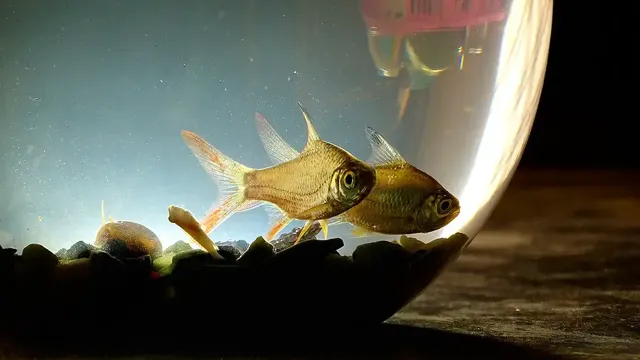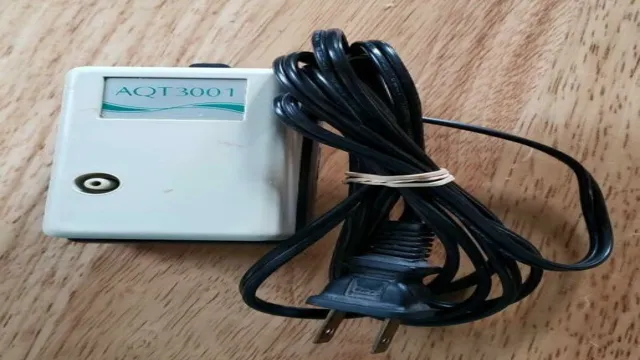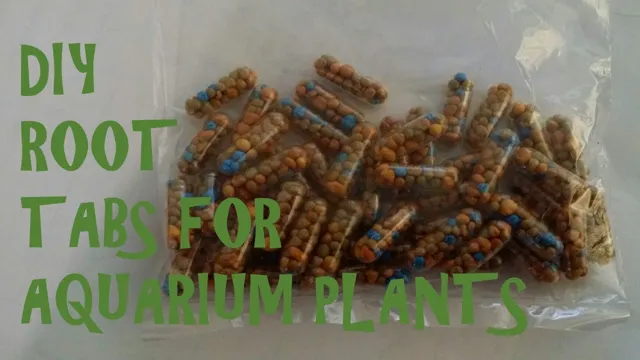Aquariums are undoubtedly one of the most fascinating sights to behold. Feeling a sense of tranquility as you watch the fish swim by can be therapeutic. But anyone who has ever owned an aquarium knows the importance of maintaining a healthy environment for the fish to thrive in.
One of the factors that most commonly affects the aquatic animals is the flow within the tank. While it is necessary to have adequate water movement, having too much can cause problems. One such issue is the formation of sand dunes.
In this blog, we will discuss some tips to avoid sand dunes and ensure that your aquarium stays healthy and thriving.
Understanding Aquarium Flow
If you want to promote healthy aquatic life in your aquarium, it’s important to get the flow balance just right. But, if you’re not careful, increasing flow can also create sand dunes and other disturbances that can make your aquarium unattractive and even dangerous for your fish. So, how do you get flow without creating sand dunes in your aquarium? One option is to use a wave maker, which can create random patterns of flow that simulate natural ocean currents.
You can also use a combination of a return pump and a powerhead, but it’s important to position them correctly to avoid creating “dead spots” where water doesn’t circulate. Additionally, consider the size and layout of your tank, as well as the specific needs of different species of fish and coral when determining your flow strategy. With a little bit of experimentation and patience, it is possible to achieve the perfect flow balance in your aquarium.
Importance of Water Movement in Aquariums
When it comes to aquariums, water movement is pivotal. It’s not just about aesthetics; it’s critical to an aquarium’s health as well. Understanding aquarium flow is one of the most critical aspects of maintaining a healthy, thriving aquarium.
Proper water circulation ensures that fish and other water creatures receive adequate oxygen, which is crucial for their survival. Additionally, water movement helps to distribute heat uniformly throughout the tank, preventing the buildup of hot spots, an issue that can lead to serious problems for the tank’s inhabitants. In essence, water flow is like the blood circulation system of an aquarium, and it requires careful consideration when setting up and maintaining an aquarium.
As an aquarist, it’s essential to understand all the factors that affect water movement, such as pumps, filters, and powerheads. With proper water movement, you can create a healthy and beautiful ecosystem that provides an ideal environment for your beloved fish and aquatic creatures.

What Causes Sand Dune Formation in Aquariums
Aquarium Flow Sand dunes are a common occurrence in aquariums, but many hobbyists don’t understand what causes them. The answer lies in the flow of your aquarium water. When the water flow is not consistent, it can cause areas of high and low pressure, creating mini-cyclones that move sand around and build up dunes over time.
To prevent sand dune formation, it’s essential to maintain a consistent water flow throughout your tank. One way to achieve this is by incorporating powerheads or additional filters. These devices can help distribute water evenly and prevent sand from settling in one place.
It’s also a good idea to monitor your aquarium’s flow regularly to ensure that it stays consistent and doesn’t cause any unwanted changes to your tank’s environment. With the right tools and careful attention, you can avoid sand dune formation and maintain a healthy and balanced aquarium for your aquatic pets. (See Also: How to Grow Aquarium Plants without Fish for a Flourishing Underwater Garden)
Strategies to Get Good Flow without Sand Dunes
If you’re looking for ways to improve the flow in your aquarium, but don’t want to create sand dunes, there are still plenty of strategies you can use. One of the most effective ways to get good flow is by experimenting with the placement of your aquarium equipment. Try positioning the outflow of your filter or powerhead toward the surface of the water, as this will help produce more surface agitation and better circulation.
Additionally, consider using a wave-maker to create more dynamic water patterns and mimic the natural ebb and flow of the ocean. Finally, try adding live plants to your tank, as these will also help to improve water circulation by creating natural barriers and currents. By implementing these simple tips and tricks, you can achieve excellent flow in your aquarium without ever creating a single sand dune.
Proper Placement of Powerheads and Filters
Proper Placement of Powerheads and Filters One of the key factors in maintaining a healthy and thriving aquarium is proper water flow. As an aquarium owner, it’s important to ensure that the water in your aquarium is moving in a way that closely mimics the natural currents found in your fish’s natural habitat. In order to achieve this, you’ll need to strategically place powerheads and filters throughout your tank.
One effective strategy to ensure good flow without creating sand dunes is to place your powerheads and filters in diagonal corners of the tank. This will create a “cross current” effect, with water being forced from one end of the tank to the other, before being pulled back by the filter. By placing the powerheads and filters diagonally, you’ll also avoid creating sand dunes in corners where debris typically accumulates.
Another option is to use a wave maker, which can simulate natural ocean conditions by creating alternating wave patterns throughout your aquarium. Most wave makers come with adjustable settings, so you can experiment with different patterns and intensities until you find the perfect flow for your fish. Ultimately, the key to creating good flow in your aquarium is to closely monitor the behavior of your fish.
If you notice that your fish are congregating in certain areas or seem lethargic, it may be a sign that the flow in your tank isn’t right. But with a little experimentation, you’ll be able to find the perfect balance and keep your aquarium thriving.
Using Wave Makers and Water Return Nozzles
If you’re a reef tank enthusiast, you might have heard of sand dunes and how they can affect the flow and overall health of your tank. Sand dunes occur when the sand in your tank builds up and creates an uneven surface, which can lead to poor circulation and dead spots. But fear not, there are strategies to get good flow without sand dunes, such as using wave makers and water return nozzles.
Wave makers can create natural currents in your tank, mimicking the ebb and flow of the ocean. Water return nozzles, on the other hand, can direct water flow exactly where you want it, ensuring no dead spots. Both of these tools can be adjusted to provide the optimal flow for your specific tank and its inhabitants.
So, if you want to create a healthy and vibrant reef tank, consider investing in wave makers and water return nozzles to get the perfect flow without the bothersome sand dunes.
Adding Live Plants and Natural Decorations
Adding live plants and natural decorations to your aquarium can greatly enhance the overall aesthetic and provide a more natural environment for your fish. To achieve good flow without creating sand dunes, consider using plants like java moss or anubias that don’t require substrate. You can also add driftwood, rocks, or artificial plants to create hiding spots and shaded areas for your fish.
When selecting decorations, be sure to choose items that are safe for your fish and won’t alter the water chemistry. Adding natural elements to your aquarium can help mimic the fish’s natural habitat and provide a stress-free environment for them to thrive in. So, why not add some live plants and decorations to your aquarium today? Your fish will thank you. (See Also: How to Determine Water Level for Aquarium Sump: Tips and Tricks)
Maintenance Tips to Keep Aquarium Flow in Check
If you’re an aquarium enthusiast, one of the most important things to consider is maintaining the proper flow in your tank. However, trying to create flow without creating sand dunes can be tricky. One of the first steps to achieving the right flow is to choose the right equipment.
A powerhead or wavemaker can easily help create the necessary flow without shifting the substrate too much. Another important factor is to make sure your tank is properly maintained. This means regularly cleaning the substrate and rocks to ensure proper water flow.
Finally, consider the placement of your powerhead or wavemaker. Positioning it at an angle will help to create a more circular flow pattern, as opposed to a back and forth motion. With these tips in mind, you can enjoy a healthy and thriving aquarium without any excessive sand buildup.
Keeping Filters and Pumps Clean and Running Efficiently
As aquarium hobbyists, it’s important to keep our filters and pumps clean and running efficiently to maintain a healthy aquatic environment for our fish and plants. Regular maintenance is key in preventing clogging and ensuring proper water flow. One helpful tip is to clean filters regularly, ideally once a month, by rinsing the media under running water or by using aquarium water, avoiding the use of tap water which contains chlorine and other harmful chemicals.
It’s also important to check for any damaged or worn out parts and replace them as needed. Additionally, cleaning the pump impeller can improve its performance by removing any built-up debris or algae, which can slow down water flow. By taking care of our filters and pumps, we can ensure optimal water circulation which plays a crucial role in maintaining the overall health of our aquariums.
Regular Water Changes and Testing
Regular water changes and testing are essential for keeping your aquarium inhabitants healthy and happy. One of the most crucial maintenance tips for aquariums is to perform regular water changes. This practice helps remove harmful toxins, such as ammonia and nitrate, that can accumulate in the water.
Without regular water changes, these toxins can build up and put stress on your fish, leading to health problems or even death. Testing the water regularly is also crucial to detect any imbalances and prevent potential issues. By testing the water, you can adjust the pH, hardness levels, and other parameters to create a stable and healthy environment for your aquatic pets.
Remember, a little effort in maintenance can go a long way in ensuring the longevity of your aquarium’s health. Don’t forget to make it a routine to do regular water changes and testing. Your fish will thank you for it!
In Conclusion: Achieving Ideal Aquarium Flow is Possible Without Sand Dunes
In summation, getting flow in your aquarium without creating sand dunes can be a tricky task. But fear not, as there are a variety of methods that can help achieve this goal. Whether it’s using strategically placed powerheads, adjusting your tank’s filtration system, or even employing the help of some aquatic snails, there are plenty of ways to get that gentle, flowing current without creating a desert landscape in your tank.
With a little bit of research and experimentation, you’ll be able to create a beautiful and thriving aquatic ecosystem that both you and your fish can enjoy!” (See Also: How to Figure Gallons in Aquarium: A Beginner’s Guide to Calculate Accurate Water Volume)
FAQs
What are some alternative ways to create water flow in an aquarium without using sand dunes?
Some alternative ways to create water flow in an aquarium include using powerheads, wave makers, water pumps, and submerged filters.
Can aquarium plants affect water flow?
Yes, aquarium plants can affect water flow as they can act as natural barriers to redirect water flow. However, they can also be used strategically to enhance water flow in certain areas.
Are there any particular fish species that can help generate water flow?
Yes, certain fish species such as goldfish, danios, and angelfish are known to be strong swimmers and can help generate water flow in an aquarium.
How important is water flow in an aquarium?
Water flow is essential for maintaining good water quality in an aquarium. It helps distribute nutrients and oxygen evenly, prevents stagnant areas and debris buildup, and mimics the natural environment of fish and other aquatic creatures.
Can adding a protein skimmer affect water flow?
Yes, adding a protein skimmer can affect water flow as it requires a certain water flow rate to function properly. It is important to ensure that the skimmer is not impeding the overall water flow in the aquarium.
Can too much flow be harmful to aquarium inhabitants?
Yes, too much flow can be harmful to some aquarium inhabitants such as delicate corals and invertebrates. It is important to strike a balance between optimal flow rate and not causing undue stress or damage to the aquatic life.
How often should I clean the equipment used to generate water flow?
It is recommended to clean any equipment used to generate water flow on a regular basis, at least once a month. This includes powerheads, filters, and pumps, as buildup of debris and other contaminants can hinder their effectiveness.







